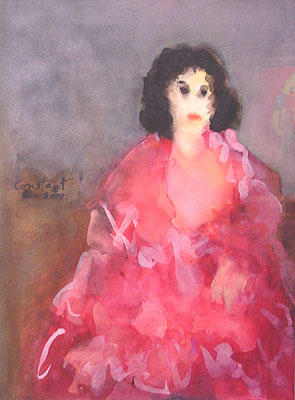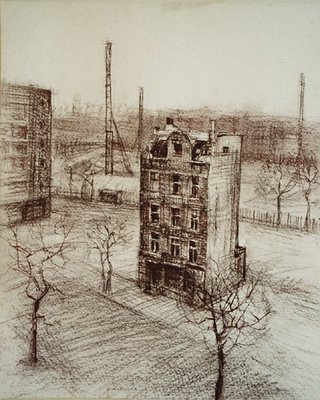
My favourite soul artist is Mavis Staples. With her expressive sensual voice I like her even more than Aretha Franklin. One of her songs is
Time waits for no-one. These lyrics tell a reality which we all face. You can wait for the time to pass, the time will never wait for you. Nobody can hold back the clock. For everbody, from poor to rich, time is a scarce resource. I was thinking: How do fine artists deal with time?
First. Throughout the centuries artists let themselves be inspired by the same themes time after time again. In the course of time students are drawing model and portrait painters are studying the face. They approach the subject with a sense of wonder like it is new, like they never saw it before. The human body and face do not belong to a certain period and will never get out of date; they are eternal. Picasso called one of his works
l'eternel feminin.
A good painting not only shows something specific of the period when it was made but also has got timeless elements. For instance on the paintings of the impressionists you can see much of the fashion of this period like the dresses and hats women were wearing, but good art will never be out of time. There is something universal, everlasting in art which appeals to people from different times and places.
Second. During the process of art the sense of time is lost (not the sense of timing). A short music or dance performance can make a lifetime impression. a five minutes pencil sketch can be better than an oil painting worked on for years. That s why it makes no sense to pay an artist per hour. There is difference between the performing arts and fine arts. After the performance it is gone, only the memory remains, whereas with fine arts there is still a physical result.
Third. Artists try to overcome time with their art. Armando said that art is a struggle with time which you always lose. This sounds rather pessimistic to me. I prefer the quote of Heraclites who said 'Vita breva, ars longa; life is short, art lasts long'. Nothing is eternal but good art will endure and survive the artist. The illustration above shows a self-portrait by Edvard Munch at the end of his life as a stiff old men standing
between the clock and the bed. The faceless clock symbolizes time and the bed his last resting place. In the background his paintings, his life. Three years after this painting Munch died, but his art is still alive.

Fourth. In art time can be frozen. The same Heraclites said 'Panta rhei: everything flows, you can't step twice in the same river". So everything is changing constantly. The artist is able to let time stand still in the painting. The flowers of the still life always blossom, the landscape remains green and the girl on the portrait stays forever young. I once saw a documentary about one of the models of Picasso, who modelled for him when she was 18. During the interview she got emotional, realizing that sculpture of her did age unlike herself. Some people think it is the goal of the artist to catch the moment of time. It is Tennessee Williams who said: “The object of art is to make eternal the desperately fleeting moment." Catching the moment implies catching movement, see the quote by William Faulkner: "The aim of every artist is to arrest motion, which is life, by artificial means and hold it fixed so that a hundred years later, when a stranger looks at it, it moves again since it is life" As an artist who likes to draw dancers and musicians, these words appeal to me.
www.edgarportraits.com






